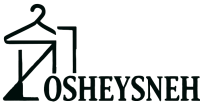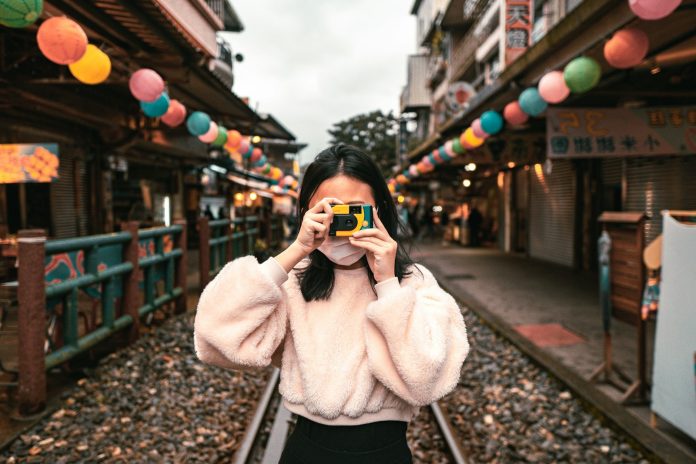Fashion photography is an art form that combines creativity, technical expertise, and an understanding of light. The way light interacts with a model, clothing, and the surroundings can elevate a simple shot into a work of art. Lighting, arguably the most crucial element in photography, can make or break a fashion shoot. The right lighting can create mood, emphasize textures, highlight details, and even define the overall aesthetic of a shoot. On the other hand, poor lighting can result in unflattering images, diminishing the impact of the clothes and the model’s appearance.
For photographers, especially those who specialize in fashion, mastering lighting techniques is essential. This essay will explore key lighting tips and techniques that can help photographers achieve success in fashion photography. From understanding natural light to using studio setups effectively, we will dive into the elements that contribute to a well-lit fashion shoot and how these elements can be harnessed to enhance the visual appeal of fashion imagery.
- Understanding the Basics of Lighting in Fashion Photography
Before diving into complex lighting setups, it’s important to grasp the basics. Light is the foundation of all photography, and fashion photography is no exception. To capture a fashion photograph that tells a story, the light needs to do more than just illuminate the subject. It must shape, define, and add depth to the image.
At its core, lighting in fashion photography is about controlling three essential elements:
Direction: The direction from which light comes will determine how the subject’s features and clothing are highlighted. Front light, side light, backlight, and overhead light all create different effects.
Quality: This refers to the softness or hardness of light. Soft light creates a flattering, even look, while harsh light creates strong shadows and dramatic contrasts. Soft light is often used in fashion to maintain a smooth, even look, while harsh light is typically reserved for high-fashion or editorial shoots that require more drama.
Intensity: The intensity of the light determines how bright or dim the photograph will appear. Strong, bright light can create sharp details and highlight textures, while dimmer light can soften details and create more intimate, moody images.
By understanding these basic principles of light, photographers can use them strategically to complement the subject, clothing, and overall mood of the shoot.
- Harnessing Natural Light for Fashion Photography
Natural light is often regarded as the most flattering light for fashion photography. It provides a softness and warmth that artificial light sources struggle to replicate. Whether shooting outdoors or indoors, natural light can add a sense of authenticity and life to fashion images. However, it is not without its challenges.
Using the Golden Hour
One of the best times to use natural light in fashion photography is during the “golden hour,” which occurs just after sunrise or just before sunset. During this time, the light is softer and warmer, creating a flattering, almost ethereal glow. The long shadows and rich tones can add depth to the photograph, helping to accentuate the model’s features and the texture of the clothes.
To make the most of the golden hour, position the model in a way that allows the light to wrap around their face and body, creating a soft, glowing effect. Avoid harsh overhead light during midday, which can create unflattering shadows under the eyes and chin.
Diffusing Natural Light
When shooting indoors, large windows can provide ample natural light, but this light can often be too harsh if not diffused properly. To soften the light, use diffusers or sheer curtains to break up the intensity. Reflectors can also be used to bounce light onto the model to fill in shadows and create a more balanced look.
Positioning the model near a large window or in a shaded area where the light is filtered will give you a more even and soft look, perfect for fashion photography where texture and details are essential. The key is to avoid direct sunlight, which can cause unappealing hotspots and deep shadows.
- Artificial Lighting: Tools and Techniques for Studio Shoots
While natural light can be incredibly beautiful, artificial lighting provides more control and flexibility, especially for studio fashion shoots. Professional photographers often rely on a combination of softboxes, umbrellas, and other lighting modifiers to create the desired effect.
Key Light, Fill Light, and Backlight
The most basic lighting setup in a studio is a three-point lighting system, which involves using three distinct light sources:
Key Light: The key light is the primary light source and is typically positioned at a 45-degree angle from the subject. This light illuminates the model’s face and body, creating the main exposure. The key light can be modified with softboxes or umbrellas to soften its intensity.
Fill Light: The fill light is used to soften the shadows created by the key light. It’s typically placed opposite the key light, at a lower intensity. The fill light helps to create a more even exposure, preventing harsh shadows from detracting from the details of the clothing.
Backlight (or Hair Light): Backlighting adds drama and separation to the image by creating a rim of light around the subject. It’s often placed behind the model and can be used to highlight the contours of their body or hair, making them stand out from the background.
By balancing the intensity and placement of the key, fill, and backlight, photographers can control the mood, texture, and depth of their fashion photos.
Using Softboxes and Umbrellas
Softboxes and umbrellas are two of the most common modifiers used in fashion photography to soften light. Softboxes are large, box-shaped devices that diffuse light evenly, creating a soft, flattering effect. These are particularly useful in fashion photography, where the goal is often to create smooth skin tones and even lighting on the clothing.
Umbrellas work similarly but tend to provide a broader spread of light. Reflective umbrellas bounce light off a reflective surface, softening its intensity, while translucent umbrellas allow light to pass through, offering a more diffuse look.
Both softboxes and umbrellas are excellent tools for controlling the quality of light, but softboxes are often preferred in fashion photography for their ability to create a more controlled, uniform look. These tools can help minimize harsh shadows and ensure that the model’s outfit is illuminated evenly.
- Lighting for Fashion Styles and Themes
Fashion photography covers a wide range of styles, from high-fashion editorial shoots to more casual lifestyle imagery. The lighting setup should be tailored to the aesthetic of the shoot and the story you want to tell.
High Fashion and Editorial Lighting
High-fashion and editorial fashion shoots often embrace dramatic lighting setups that create strong contrasts and bold shadows. In these cases, photographers may use hard light or angled lighting to create sharp shadows, emphasizing the structure of the clothing and adding depth to the composition.
For example, a strong backlight can create a silhouette effect, while a high-contrast key light can add intensity to the model’s features. These techniques are often used to create a sense of mystery or power, lending an air of sophistication to the shoot.
Lifestyle and Casual Fashion Photography
In lifestyle or casual fashion photography, lighting tends to be softer and more natural, capturing the model in relaxed, everyday situations. Soft, diffused light, often mimicking the effects of natural daylight, creates a warm and inviting atmosphere.
For these types of shoots, photographers often use large diffused lights or bounce lights to create a gentle, flattering effect on both the model and the clothing. The goal is to create a relatable, approachable feel while highlighting the clothing in a realistic, comfortable way.
- The Role of Shadows in Fashion Photography
Shadows in fashion photography are not just something to avoid—they are essential in creating depth, texture, and interest in your images. The way light falls across the clothing and the model’s face can enhance the overall aesthetic and shape the mood of the photo.
For example, dramatic shadows can emphasize the contours of a model’s face, accentuating cheekbones or jawlines, while soft shadows can create a more natural and flattering look. Photographers should consider how shadows interact with clothing and the model’s features to enhance the image rather than detract from it.
Experimenting with the direction and intensity of shadows is crucial in fashion photography, especially for high-fashion shoots where the interplay of light and shadow often defines the overall visual appeal.



